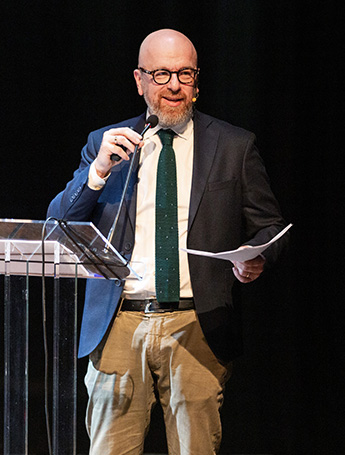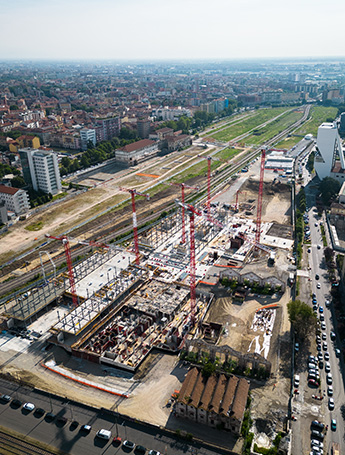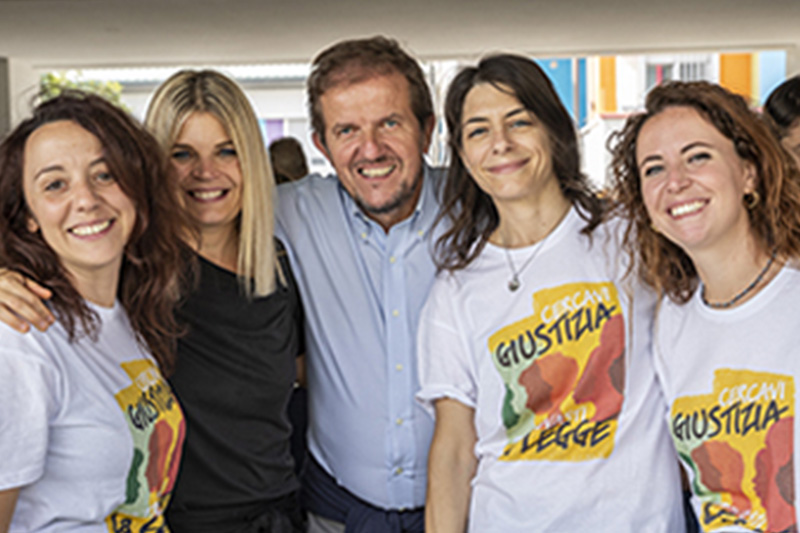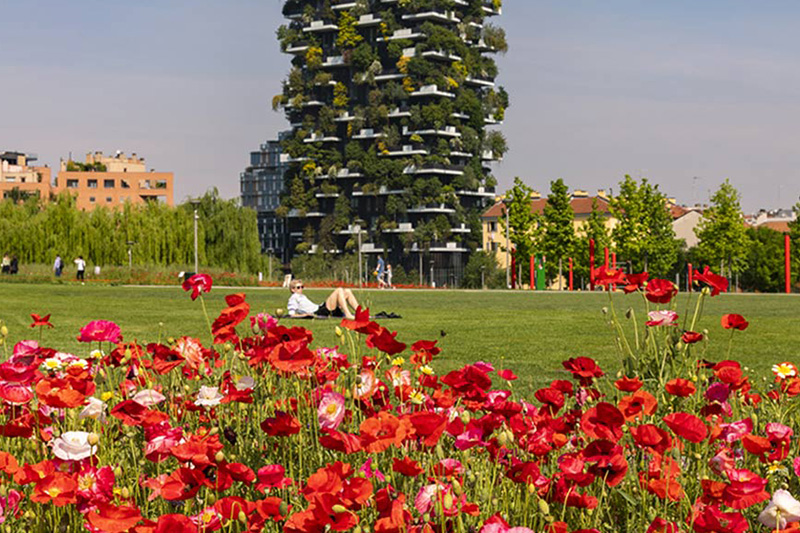“Working today in the real estate sector in a city like Milan means dealing with two obvious trends. There is great emphasis on the city attractiveness, which is positive. However, this conveys selective mechanisms: Milan is becoming an extremely problematic city for the middle class and people with an average income.”

Alessandro Maggioni, Chairman of the Board of
Directors of Consorzio Cooperative
Lavoratori di Milano
Alessandro Maggioni, Chairman of the Board of Directors of the Consorzio Cooperative Lavoratori di Milano (Workers' Cooperative Consortium of Milan), one of COIMA’s partners in several projects, spent many years in the cooperative sector and saw this trend becoming more established over the last few decades: “with our affordable housing observatory (OCA) we studied FIMAA data for 2022. A €1,500/month salary allows a private individual to buy 15 sqm on the new and about 25 sqm on the second-hand markets. This figure shows how the current housing market in Milan is unable to meet the demands of most citizens.
Read also: Investing in the welfare of communities
This situation is made more problematic by the disappearance of several housing schemes that in the past guaranteed housing categories with differentiated and limited prices, made available to families and individuals based on their income. Maggioni said: “There are basically four housing schemes. Free housing, which sells properties at prices that can be very high; subsidised or ordinary housing, i.e., housing at a price that is not low, but not out of control; subsidised housing, with a value that is below €3,000 per square metre; and social housing.” These schemes have been forgotten by the administration in recent years. It seems like only free housing for the rich and subsidised housing for the poor have been considered, forgetting everything in between.”
The cooperative principle that guides the Consorzio Cooperative Lavoratori meets the housing needs that are ignored. “The Consortium was founded in 1974 as a merger of the previous Acli Casa consortium, with the aim to building houses that enable the lower and middle classes to work and live in Milan. Since then, we have built about 15,000 housing units in Milan and its province based on the cooperative model, with members participating in the life of our organisation. Today the scenario has changed and is more complex due to inflation and market high prices.”
According to Alessandro Maggioni, the cooperative model can provide the tools to respond to the existing real estate situation in Milan, making available an increasing percentage of ‘affordable houses’ for the middle-class, a key issue also in the COIMA Roots.
Read also: A new urban planning era
What is meant by affordable housing? Alessandro Maggioni and CCL have clear ideas on the subject: “there are several elements to consider. The first is the price, which classifies the affordability of a house in relation to available income. Then there is quality - a house at a fair price does not have to be ugly. We have been focusing on this issue a great deal in the last 15 years, even in cooperatives, emphasising that a cooperative house conforms to the same standards as private housing.”
The third element defining affordability, is a disruption compared to recent building practices. Alessandro Maggioni refers to the “relationship between private and collective space.”
According to the cooperative model, living is not simply the occupation of a private space, but the willingness to engage in a relationship with the outside world. This is an aspect that must be considered from the design point of view - buildings conceived to provide opportunities for dialogue with the outside world, contributing to the well-being of residents when accessing services and public spaces.
Read also: A sustainability and inclusion model
“Price, quality and the relationship between private and public space are three crucial elements in our daily work. When thinking about the last few years, which were marked by radical changes, life in Milan has been less impacted than expected when seen from a real estate perspective. The fundamentals of living are still the same: people are looking for a house with comfortable spaces.
An example is the importance of terraces and loggias, which came to the fore during the pandemic. It wasn’t anything new - people always wanted them, it was just a trend confirmation. The real innovation from my point of view concerns the arrangement of collective spaces. We hear much about co-housing, while there has been an increased focus on the creation of quality public spaces and the recovery of “in-between” spaces, such as the outdoor spaces in front of restaurants, which have regained strength.”
In this situation, a cooperative enterprise can become an agent of change, because it redistributes wealth in a logic of community society based on mutual exchanges. Today, a selfish dimension still prevails, but planning collective spaces in advance and identifying the use of these spaces, could take advantage of the situation, which sees a lower rate of squabbling among the participants in a cooperative or cohabitation experience.”
A greater propensity to share “parts” of private life is emerging in Italy as well. “The experiences seen in other big cities, such as Amsterdam and Barcelona, are desirable examples because they show a different balance between mobility and stillness, and this is what makes a city alive. A balance between public and private, built space and green areas, working and leisure time, which must be part of housing.”
According to Alessandro Maggioni and CCL, cooperatives can strengthen this trend even in a city like Milan, overcoming the rigid distinction between private and public space that characterised a different era of living. Maggioni said: “We are already starting to see some positive results compared to the past.” A disregarded element is that a cooperative adopts a principle that meets ESG parameters. Participatory and pedagogical mechanisms are triggered because people educate themselves to be together. Cooperatives teach a process of complexity that is no longer taught, because today everything is intermediated.”
Read also: Connectivity and measurable results for sustainable real estate
Today there are several projects of this kind initiated by CCL in Milan. An example was the social housing in via Zoia, delivered in 2014. Maggioni said: “This was a project involving an area granted through a call for tenders by the administration and made available for social housing. Recently, we delivered another project in Lambrate, the Cohabitat Lambrate, a social housing work, with more than 100 dwellings for sale at €2,150 per square metre and 50 dwellings for rent at €75 per square metre. An example of rent in this project is €470/month for a new two-room apartment in class A++.”

Porta Romana ex railway yard
The first CCL and COIMA partnership project will be developed in the former rail yard of Porta Romana. As part of the Programme Agreement that includes about 50,000 square metres of Social Residential Housing for the yard, CCL and the COIMA Housing fund will develop the ordinary social housing component with 225 housing units for about 17,000 square metres and the Public Residential Housing component with 95 housing units for about 5,000 square metres.
Could the cooperative enterprise be an alternative to the market? “It is more a market and private enterprise ally, to achieve a common goal - providing housing, work and public spaces to all categories of citizens, which make up the mosaic of a metropolis like Milan” Maggioni said.



